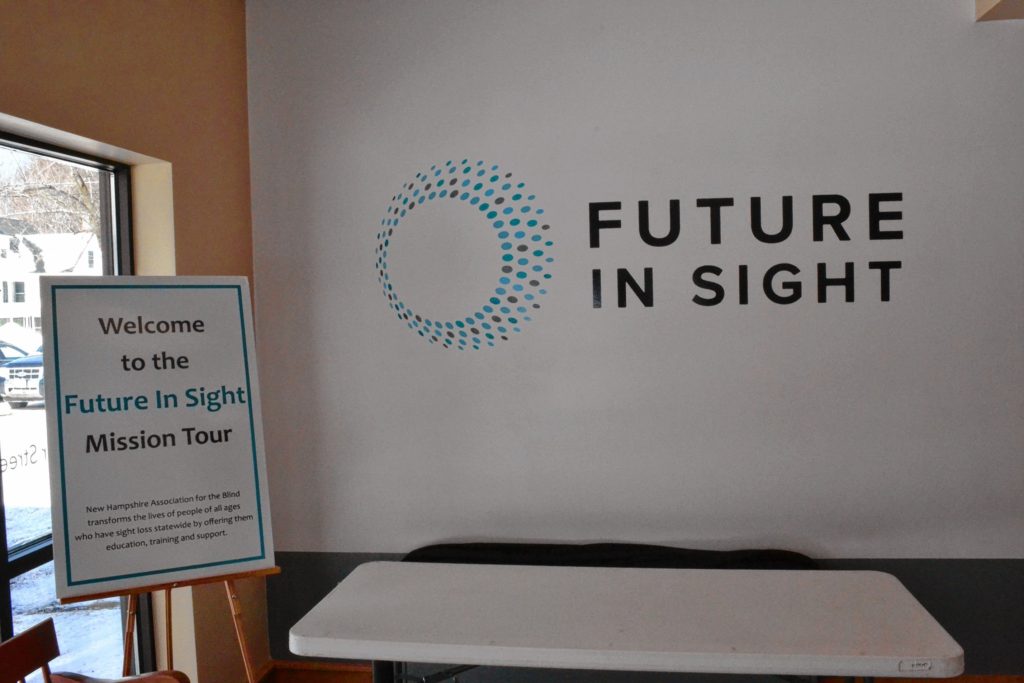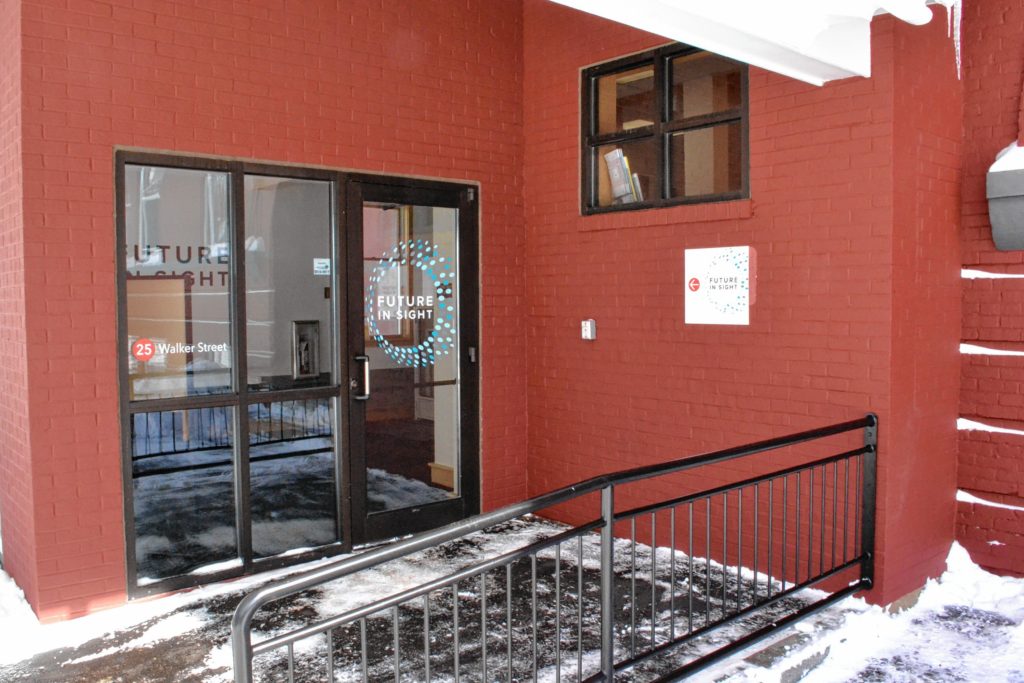There’s been a big change for those in New Hampshire dealing with visual impairment.
After 105 years, the New Hampshire Association for the Blind has rebranded itself to, drum roll please . . . Future in Sight.
While the mission of the organization hasn’t changed, the word “blind” made it hard for medical professionals to have a conversation with patients who were not in fact blind, but rather dealing with vision loss or impairment. It was also determined that it kept visually impaired people from contacting the organization because they didn’t think there was any type of services to help them.
“It can be a struggle for them to pick up the phone and ask for help,” said Future In Sight President and CEO David Morgan.
In New Hampshire, according to the Center for Disease Control and Prevention, more than 30,000 residents are dealing with some sort of visual impairment. In the fiscal year from Sept. 1, 2015, to Aug. 31, 2016, only 1,100 people received services. That’s less than 5 percent, which, as you can all probably gather, isn’t very much.
“That was a bit of a wake-up call,” Morgan said.
It was about a year ago when the discussions began as to how the organization could reach more people. A more open and inviting name was at the top of the list, as was an expanding list of services. But to be clear, the quest to help those who are blind will remain part of that core mission.
“We really want to help anyone who can benefit from our services,” Morgan said.
For the first time, Future In Sight now works with families and children ages 0 to 3, where services used to begin at the age of 3. They doubled the education team, and now work with 90 kids in school districts around the state, which is a 50 percent increase over the previous school year. Future in Sight also recently signed a three-year contract with the N.H. Department of Education.
“Our goal is to reach as many as those in that other 95 percent that we can,” Morgan said. “And we’ve made a bunch of progress.”
There are also occupational therapists on staff now that will go into a client’s home and ensure they’re living in a safe environment.
To show how things have changed in a short amount of time, referrals were up 35 percent during the last fiscal year, when they began to talk with medical professionals about the change. In the first six months of this year, they’ve already served 1,300 people.
The best part about it is that this was all done in addition to the plethora of service already offered.
“We haven’t given up one service to add these other services,” Morgan said.
As part of the rebranding, Future In Sight is offering mission tours on the first and third Wednesday of each month. While you’ll get to see the facilities, actual clients will be leading the missions so you can learn how exactly the services can impact someone with visual impairment.
“You’re hearing directly from them,” Morgan said.
And, of course, a complete name change isn’t the easiest thing from a cost or logistical standpoint.
“It’s an expense, but I think we broaden our appeal and it will broaden our reach to individuals who can benefit from our services,” Morgan said.
The organization is hosting an event, Opening Space for the Future In Sight, on April 11 from 9 a.m. to 4:30 p.m. at the Capitol Center for the Arts. This full day learning exchange aims to start an ongoing conversation around the future of eye health, education, rehabilitation and training, technology, and more for those with sight loss.
Cost is $45 and includes your participation, pre- and post-conference materials, continental breakfast and boxed lunch.
For more on the event, as well as info about Future In Sight tours and what services are offered, visit futureinsight.org.
“If you’re struggling with your sight, know that we want to be here to serve you,” Morgan said.










